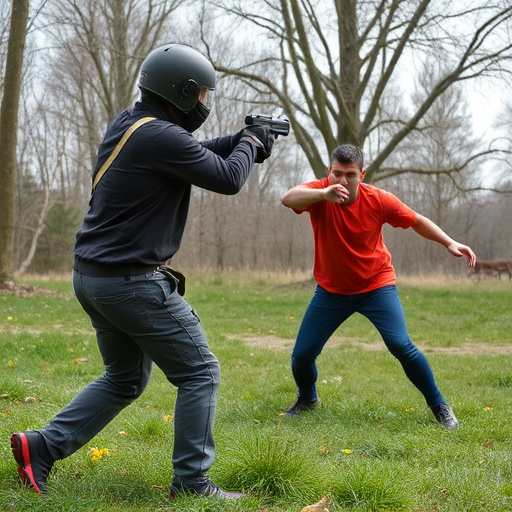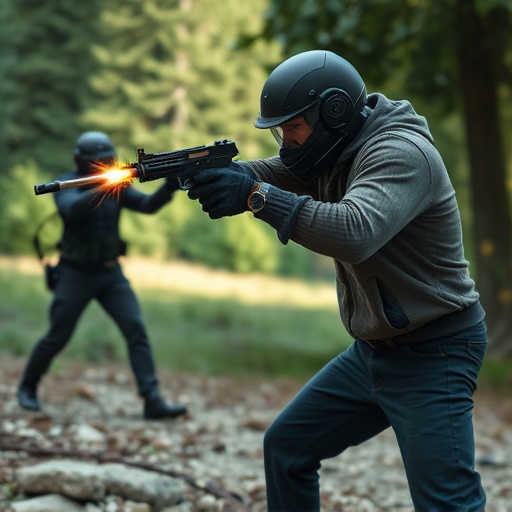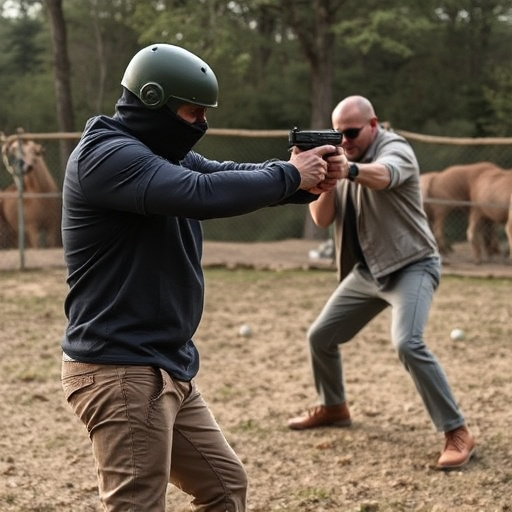Silent stun guns, designed for non-lethal self-defense, deliver powerful electric shocks that temporarily paralyze targets without causing permanent harm. Their effectiveness and duration vary based on design, voltage output, and target's physicals. These devices are popular in high-risk environments due to their discreet nature, allowing users to incapacitate attackers quickly while drawing minimal attention. However, their possession and use are subject to global regulations, requiring users to navigate local laws. When choosing a silent stun gun, consider performance, portability, and ease of use, with key factors including voltage output and one-button activation for discreet self-defense.
“Uncover the powerful impact of stun guns, silent weapons that offer discreet self-defense options. This comprehensive guide explores the science behind their muscle incapacitation duration and factors influencing this critical time. From understanding the technology to legal implications and choosing the right device, we navigate the world of stun guns. Discover how these innovative tools can provide temporary immobilization, ensuring personal safety without drawing attention. Empower yourself with knowledge on silent stun guns for effective, subtle defense.”
- Understanding Stun Guns and Their Mechanism
- Factors Affecting Muscle Incapacitation Time
- Legal Considerations and Use Cases
- Choosing the Right Stun Gun for Discreet Self-Defense
Understanding Stun Guns and Their Mechanism

Stun guns, also known as electroshock weapons, are designed to incapacitate individuals through the delivery of a powerful electric shock. Unlike traditional firearms, stun guns do not fire bullets but rather use electrical current to disrupt muscle control in the body, rendering the target temporarily immobilized. The mechanism involves generating high-voltage, low-current electricity, which is then channeled through metal prongs or probes into the body. This sudden jolt of electricity overloads the nervous system, causing muscles to contract uncontrollably and leading to temporary paralysis.
The effectiveness and duration of muscle incapacitation from stun guns vary depending on factors such as the weapon’s design, the amount of current delivered, and the target’s physical attributes. Modern silent stun guns, often preferred for discreet self-defense, typically deliver a shock that lasts for 2 to 5 seconds. During this time, the individual targeted will experience intense muscle spasms and be unable to move or resist effectively. However, unlike knockout drugs or traditional firearms, stun guns do not cause permanent harm, making them popular choices for individuals seeking non-lethal self-defense options in various situations.
Factors Affecting Muscle Incapacitation Time

The duration of muscle incapacitation caused by silent stun guns varies based on several key factors, offering a crucial window for self-defense in discreet situations. One primary determinant is the stun gun’s voltage output; higher voltages generally result in longer periods of immobilization. Advanced models often feature adjustable settings, allowing users to tailor the impact level according to their needs and circumstances.
Additionally, the target area of application plays a significant role. Stunning an individual directly in the legs or arms can significantly disrupt their mobility faster than targeting the upper body or torso. This strategic approach is especially valuable for self-defense scenarios where swift neutralization is paramount, ensuring the safety of oneself and others without drawing undue attention with loud noises that could alert potential attackers.
Legal Considerations and Use Cases

The use of silent stun guns for discreet self-defense raises several legal considerations. Stun guns, also known as electronic control devices (ECDs), are subject to varying regulations across jurisdictions. In many places, they fall under the category of less-lethal weapons, which implies specific restrictions on who can possess and use them. Individuals looking to purchase a silent stun gun for personal protection should familiarize themselves with local laws to ensure compliance. This includes understanding the permitted uses, required permits, and any limitations on power output or size.
Despite legal constraints, silent stun guns have found their place in various use cases. They are often employed by individuals seeking non-lethal means of self-defense in high-risk situations, such as those living in areas with high crime rates or personal protection officers traveling to unknown territories. Their discreet nature allows users to incapacitate assailants temporarily without drawing excessive attention, providing a crucial window for escape or assistance to arrive. This versatility has contributed to their growing popularity among those prioritizing silent, yet effective, self-defense solutions.
Choosing the Right Stun Gun for Discreet Self-Defense

When considering a stun gun for discreet self-defense, it’s crucial to understand that not all models are created equal. For situations requiring quiet and minimal attention, silent stun guns offer an ideal solution. These devices are designed with advanced technology to deliver a powerful shock while producing virtually no sound, ensuring your safety remains your top priority without drawing unwanted attention.
Choosing the right silent stun gun involves evaluating factors like voltage output, weight, and ease of use. Higher voltage ensures effectiveness, but it’s important to balance this with portability. A lightweight, compact design makes it easier to carry discreetly, enhancing your ability to defend yourself in various environments. Look for models with user-friendly features like one-button activation, ensuring you’re prepared when needed without added complexity.
Stun guns, particularly silent models designed for discreet self-defense, offer a non-lethal way to incapacitate an assailant. Understanding their mechanism, the factors affecting muscle incapacitation time, legal considerations, and use cases is crucial when choosing the right device for personal safety. By selecting a high-quality silent stun gun, individuals can empower themselves with a reliable tool for self-defense in various situations.
